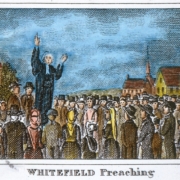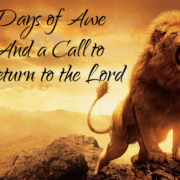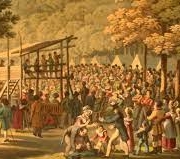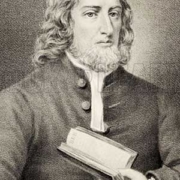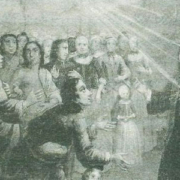Herrnhut, The Lord’s Watch
David Christian cut down the first tree for the first house for the new community the would call “Herrnhut,” which means the “Lord’s Watch.” The small group now totaled 300. It wasn’t long before Herrnhut began growing and accepted refugees from other doctrinal persuasions. Now there were not only Moravians but also Lutherans, Calvinists, Catholics, Separatists, Reformed, and Anabaptists.
The vision of Count Zinzendorf was that of the restoration of the apostolic community. He worked to establish a community of saints that loved and supports one another through prayer, encouragement, and accountability. John Wesley (founder of the Methodist Denomination) was so enamored with the Moravians that he called Herrnhut the “closest thing to the New Jerusalem that could be.” In 1738, eleven years into the revival, Wesley visited “this happy place” and was so impressed that he commented in his journal: “I would gladly have spent my life here….Oh, when shall this Christianity cover the earth as water covers the sea?”
It wasn’t something that happened overnight. With all the different views and doctrines…trouble soon arose. Many disputes erupted within the other sects over doctrinal language and how the community would support itself. From the start the Herrnhut community showed few signs of spiritual power. Leslie K. Tara described in his book, A Prayer Meeting That Lasted 100 Years, what was happening: “By the beginning of 1727, the community of about 300 people was wracked by dissension and bickering, an unlikely site for revival.” To make matters worse, a new resident, John Kruger, attacked Zinzendorf and his beliefs – preaching that the Count was none other than “the Beast” mentioned in the Book of Revelation. Linda Jacobs writes: “He turned almost the entire community of Herrnhut against their benefactor.” With a pastor’s heart, the Count began going from house to house, counseling each family from the Scriptures. He was teaching and exhorting daily, creating what he called “Bands,” a small group of believers who had “a special affinity” to each other. Before long the small community was becoming one as more and more homes were opening day and night for prayer, fellowship, and teaching. Small groups began holding all-night prayer vigils, and it seemed almost weekly that the spiritual unity and the bonds of love were becoming perceptively stronger. The community pooled their finances for the sick and began distributing goods to the poor among them.
Now that dissension and bickering had vanished, many unbelievers who came to Herrnhut were converted, and on May 12, Zinzendorf covenanted all to pray and labor for revival. The fire of the Spirit on these precious saints was beginning to heat up. Services held at this time usually ended in weeping, deep repentance, and lying prostrate on the floor. By August 5th, anticipation was building to the point where many did not want to sleep for fear that they would miss something God was doing.


